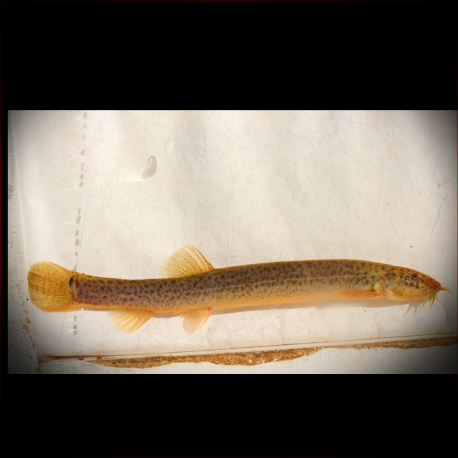More info
Datasheet
| Minimum Tank Size | 280 litres / 73.97 US gallons |
| Maximum Size | 28.0cm / 11.02inches |
| Temperature | 5°C / 41.00°F - 24°C / 75.20°F |
| Hardness | 1-12º |
| pH | 6.0-8.0 |
General Description
Misgurnus Anguillicaudatus, commonly known as the Oriental Weather Loach or Dojo Loach, is a highly adaptable and hardy freshwater species. It is characterized by its ability to thrive in a wide range of conditions and diet flexibility. The species is often used in the aquarium trade and has various color morphs available, such as the xanthic 'golden' and leucistic 'pink' forms. Misgurnus Anguillicaudatus is a member of the Cobitidae family and is most commonly found in regions like Siberia, Korea, Japan, China, and northern Vietnam.
Aquarium Setup
Misgurnus Anguillicaudatus requires a tank with a soft, sandy or fine gravel substrate to accommodate its burrowing behavior. Decorate the tank with water-worn rocks, driftwood branches, or tree roots to provide hiding spots and shaded areas. Lighting can remain dim unless live plants are intended for growth. Ensure a stable oxygenation level and avoid high flow rates in the tank. It's vital to cover the tank securely as this species, like most loaches, is prone to jumping, especially when first introduced.
Behaviour
Misgurnus Anguillicaudatus is known for its peaceful nature towards tank mates, though it may prey on small fish, eggs, and fry. The species tends to be more active and at ease when kept with conspecifics. M. anguillicaudatus does well in the company of medium-to-large active fish that swim higher in the water column. It is essential to research potential tank mates regarding adult size and temperature requirements before introducing them to the aquarium.
Feeding and Diet
The Oriental Weather Loach preys on insect larvae, small crustaceans, and similar organisms in the wild. In captivity, they accept sinking dried foods but should also be fed live or frozen fare like Daphnia, Artemia, and bloodworms regularly. A varied diet is crucial to maintaining their optimal health.
Reproduction & Dimorphism
Captive breeding information for Misgurnus Anguillicaudatus is scarce, with induced spawning likely through hormonal means. Natural breeding behavior involves the female leading the male into dense vegetation to release eggs, with the male wrapping around the female during spawning. Females typically have a heavier body, while mature males exhibit enlarged pectoral fins with distinct characteristics such as the lamina circularis and body swellings behind the dorsal fin.
Habitat and Distribution
Native to regions like Siberia, Korea, China, and Japan, Misgurnus Anguillicaudatus is commonly found in shallow, slow-moving areas of rivers, streams, swamps, and paddy fields. The species has established alien populations in various countries globally due to the aquarium trade, use as a food fish, and live bait for angling. They can survive in varying water conditions, including low oxygen levels, by utilizing their skin and posterior intestine for breathing.

